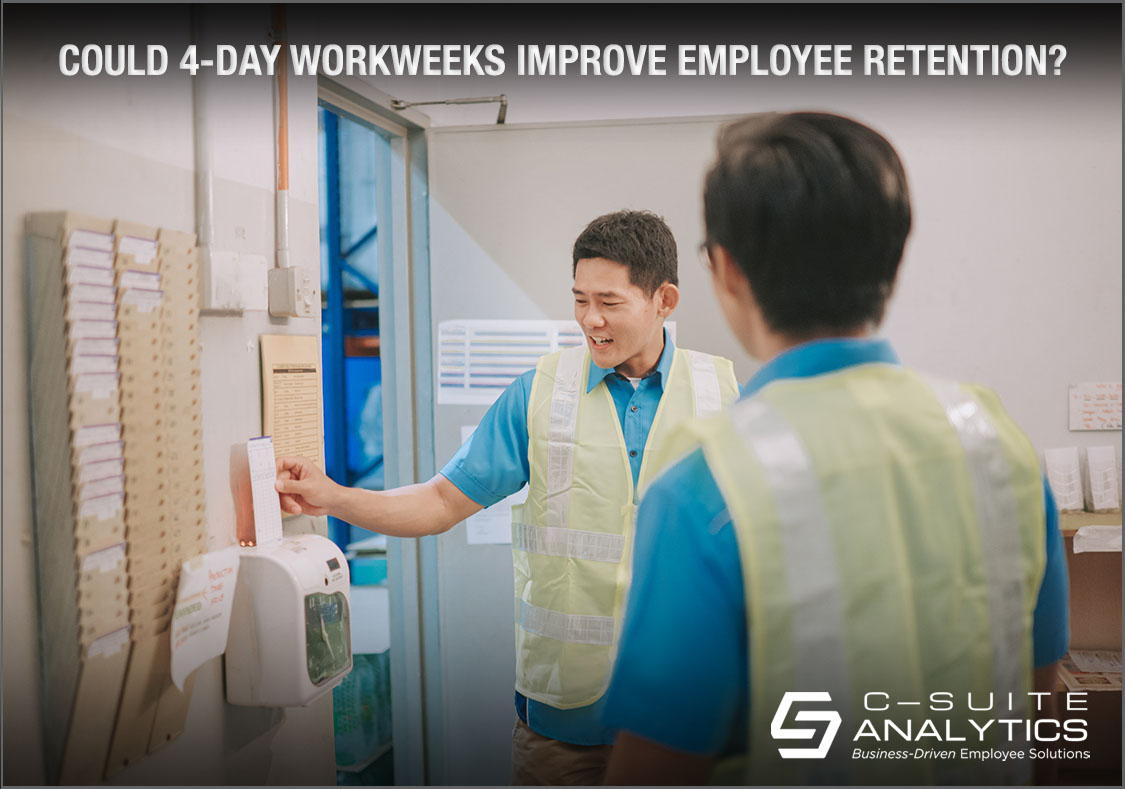Data shows a four-day workweek is popular with employees. On the company side, data suggests work satisfaction and productivity are up, recruiting is easier…and employee turnover is down. And during these days workforce shortages, every company is seeking a recruiting edge. Could this be “it”?
How to Keep Top Performers From Quitting During the Pandemic

One of those silly, outdated quotes that silly, outdated people say is “Everything that can be invented has been invented”. They would say the same about new ideas, too. But here’s one idea every HR professional should grab and run with, and for most of us it is new.
Your best performers do four times the work of others…and the math proves it. Just one of many academic studies across several industries found that the top 5% of the workforce produced 26% of the participating companies’ total output.[i]
This leads us to one of those pause-&-think moments because it means we are paying one person to do the work of five…while we are paying the other four people to do the work of…one, I guess.
This makes complete sense when you think about how your company operates day-to-day. Everyone knows from the CEO on down that a few employees carry most of the load. These are the employees who others look up to, who answer new employees’ questions in place of their supervisor, and who role-model how the work gets done.
Think about, then, how much a top performer is actually worth. The first thing we do with client companies is place a dollar cost on turnover for each job, and require that finance participate in and approve these calculations. So for example, we know for one client company that losing an entry-level manufacturing worker costs $5,518. It makes sense, then, that losing a top-performing manufacturing worker at that company costs five times that amount which is $27,590. This would make CFOs get very serious about retaining top performers.
Think about your top salespeople, or the service workers who save your customers after service snafus…or even bank tellers or call service reps who never miss a day and always get the standard and non-standard parts of their job done perfectly.
Yet think of how many ways we treat our top performers in the same, identical ways we treat everyone else. Same pay or about the same, same benefits, same development opportunities. In this time when we demand equality, sometimes in-equality makes sense.
This surfaces one of the greatest arguments against employee surveys…that because of anonymity each employee’s input is weighed the same, regardless of their productivity. Your best performers’ opinions are lumped in with those employees you will fire tomorrow, and given the same degree of consideration.
Here’s another new thought. Our census bureau tells us the growth in the U.S. working-age population during the decade of 2020 to 2030 will be the lowest since the civil war. Not as a percentage mind you, but the raw increase in the number of people aged 20 through 60. The message becomes clear that good employees will be in short supply regardless of fluctuations in the economy.[ii]
Our COVID-driven national unemployment rate is high, such that some manager…or many managers…are going to tell you that Rodney quit, there are a lot of people looking for work, so go find me another Rodney. You can easily find a body that breathes, but if Rodney was a top performer you probably won’t find another Rodney.
What should executive teams do to retain high performers? The first thing to do is name them. Very few organizations have developed a list of top performers who drive their businesses forward, who are literally irreplaceable, and who they cannot lose. Some would argue such a list would be leaked, would cause jealousies, would cause inappropriate inequities…and they would be wrong. If one employee is worth the work of five and gets the same pay, it feels organizationally immoral to treat that person the same as others.
How should you treat top performers differently? The knee-jerk answer is pay them more and promote them into bigger jobs…but the smarter answer is to ask them. This is where Stay Interviews come in, that magical turnover-cutting, engagement-building solution where supervisors ask specific questions, listen to answers, probe to learn more, and take pages of notes. And then come back with a plan that matches those notes, that provides the very best work situation for those who you depend on the most. My guess is more would want schedule flexibility than additional pay, but none of us know until we ask.
Other solutions help, too, such as give each high performer a very good boss, and then hold those bosses accountable for retaining 95% of employees in that designated group.
You can bet there will be a national hiring surge, post-vaccine and post-pandemic when the masks come off. Now is the time to alert your top team that your best performers must be identified and addressed, but addressed only in the ways they tell you instead of the assumptions you make.
If you need help keeping your top performers, please contact me at Dfinnegan@C-SuiteAnalytics.com
[i] https://www.ere.net/top-performers-produce-4x-more-output-and-higher-quality-referrals/#:~:text=The%20top%2Dperforming%205%20percent,worker%20in%20the%20same%20job.
[ii] https://www.forbes.com/sites/billconerly/2018/03/25/the-scariest-chart-for-business-in-the-coming-decade-workers-not-available/#619726673de9



